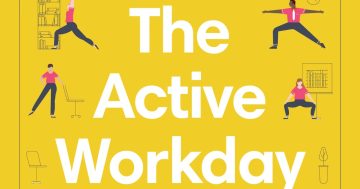Matthew Owenby* says a new survey has highlighted the gap between employee burnout and company awareness.
 How often have you been “exhausted by excessive demands on energy, strength, or resources in the workplace” over the past year? Month? Week?
How often have you been “exhausted by excessive demands on energy, strength, or resources in the workplace” over the past year? Month? Week?
That’s precisely how psychologist Herbert Freudenberger, credited with coining the term “burnout” in 1974, described how he felt during a stressful time in his own job.
Nearly 50 years ago, Freudenberger laid the groundwork for heightened attention to mental health and well-being in the workplace.
Unfortunately, while many companies have made great strides to prioritize this, burnout continues to be widespread and difficult to mitigate.
Survey says: There’s a gap in employer awareness
Three years after the onset of covid-19, employee burnout in the U.S. is comparable to levels reported at the height of the pandemic.
Aflac’s recent annual survey of U.S. employees revealed that more than half of American workers are facing at least moderate levels of burnout, on par with what our survey found in 2021.
And while burnout affects Americans across the board, we found those hardest hit by burnout are Gen Z, women, Hispanics, and those working multiple jobs.
An overwhelming majority (86 per cent) of employees with high levels of burnout have been met with anxiety, depression, and trouble sleeping. Many still feel the uncertainty of covid and fear a potential recession.
As employees face mental health concerns and battle burnout, employers feel the impact of lower productivity and job performance. Yet, fewer than half (45 per cent) of the employers we surveyed said burnout is a problem for their organizations.
Three ways companies can address burnout now
The surge in employee burnout is alarming but opens the door to renewed opportunities for employers to show how much they care for their greatest asset—employees. Here are three areas employers can close the gap on burnout:
- Support total well-being (including financial!)
We know that employees want mental health resources and support from their employers.
In fact, 80 per cent of the employees we surveyed said that having healthcare coverage for mental health conditions is just as important as physical health coverage.
If offering mental health coverage isn’t an option, other ways exist to support your employees’ well-being.
Hosting town halls and focus groups centred on mental wellness can alleviate the stigma attached to these issues.
These events can feature speakers from within or outside of your organization, but the goal is the same—for leaders to talk about their mental health openly, creating a culture where others feel safe to talk about it.
Since introducing town halls focused on mental health at Aflac, we’ve seen a 45 per cent uptick in employees’ use of our mental wellness programs.
Finally, don’t overlook the role of financial wellness when it comes to employees’ mental health.
With 77 per cent of Americans feeling anxious about their financial situation, employers are primed to help.
Financial anxiety can lead to or exacerbate mental health concerns, so providing resources and support for budgeting, financial planning, and retirement can help ease that burden.
- Move past Mental Health Awareness days to consistent attention
Mental health cannot be something leaders talk about once a year—such as during open enrolment season or Mental Health Awareness Month in May—before checking it off their list and moving on.
Small but consistent actions like providing flexible work arrangements for employees with caregiving responsibilities make a more significant impact than one grand gesture like giving employees a day, or even a week, off for their mental health.
- Make work-life balance a non-negotiable for your company
Even when policies to support work-life balance are in place, employees may be reluctant to take advantage of them.
Some employees need to be told directly that they should use their paid time off, take mental health days, or even carve out time during the workday for breaks.
Even with unlimited time off, your employees still may not be taking enough time away.
This behaviour must start at the top.
Barring true emergencies, leaders should never send emails after hours or respond to emails when they’re supposed to be out of the office.
Others will follow your example—for better or worse—so as a leader, you must model the behaviour you want to see from your employees.
Supporting employee well-being needs to be a collective purpose across companies.
Battling burnout—not just putting a bandage on the issue—is everyone’s job, from the C-suite and HR to managers and accountability partners.
If you only have buy-in from a few people or a subset of employees, establishing more balanced ways of working will not be ingrained in your organization’s culture, which is the ultimate goal.
Burnout redefined
In 2019, the World Health Organization (WHO) defined burnout as an occupational phenomenon in their international classification of diseases: “A syndrome conceptualized as resulting from chronic workplace stress that has not been successfully managed.”
The WHO has since embarked on developing evidence-based guidelines on mental health and well-being in the workplace.
The WHO’s efforts, along with the work of many others in the workplace and beyond, will continue to draw attention to employee burnout and how real and prevalent it is for employees at all stages of their careers and across industries and sectors.
Combating the mental health epidemic cannot be one person’s job or solely the responsibility of HR.
A collective effort of learning more and doing more around mental health will resonate with employees, elevate company culture, and hopefully stem attrition rates and, yes, burnout.
It starts with providing employees with the right mental health support and resources, setting expectations, and creating a culture that supports employees’ overall physical, mental, and emotional well-being.
*Matthew Owenby is chief human resources officer at Aflac Incorporated.
This article first appeared at qz.com











